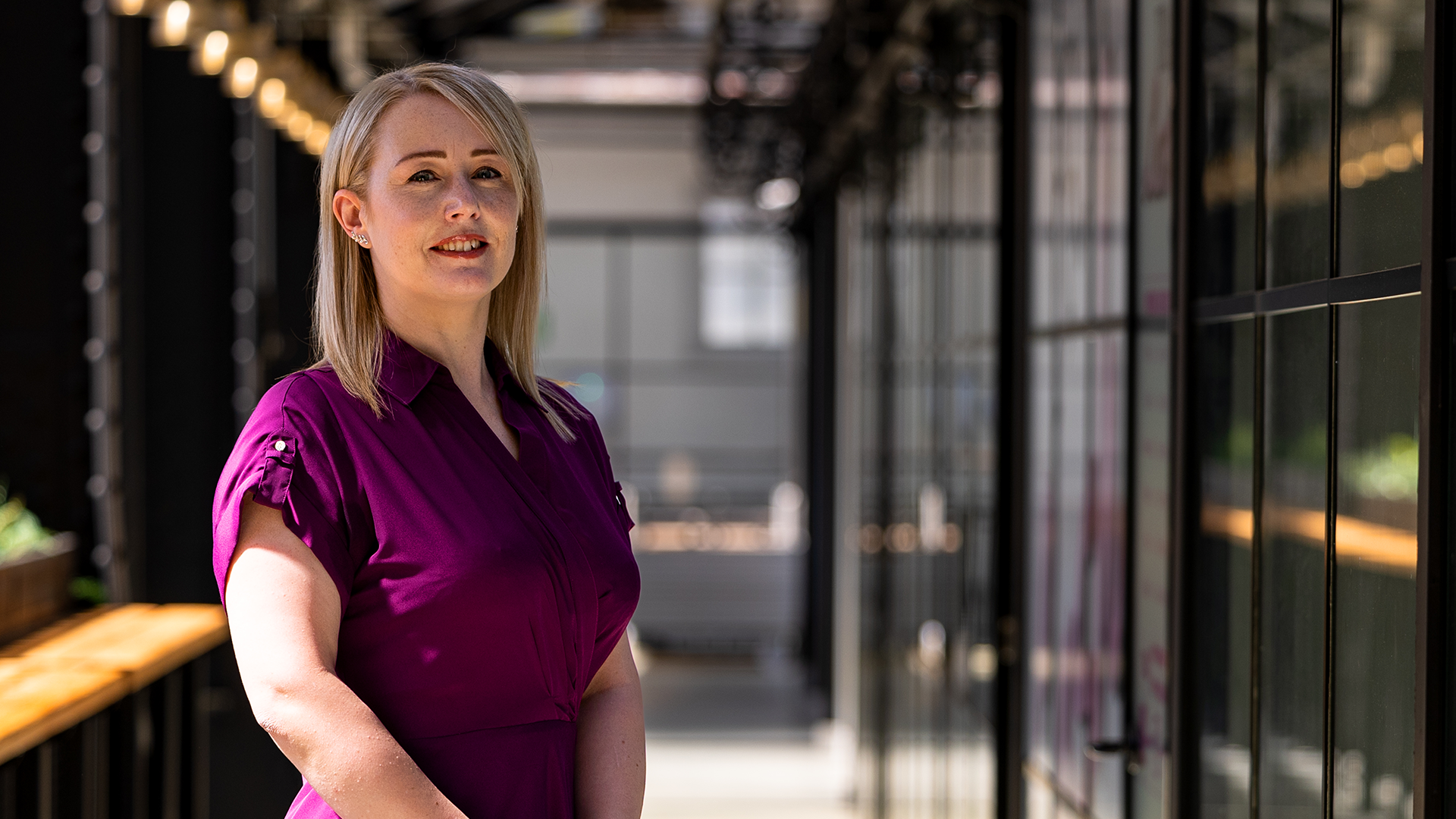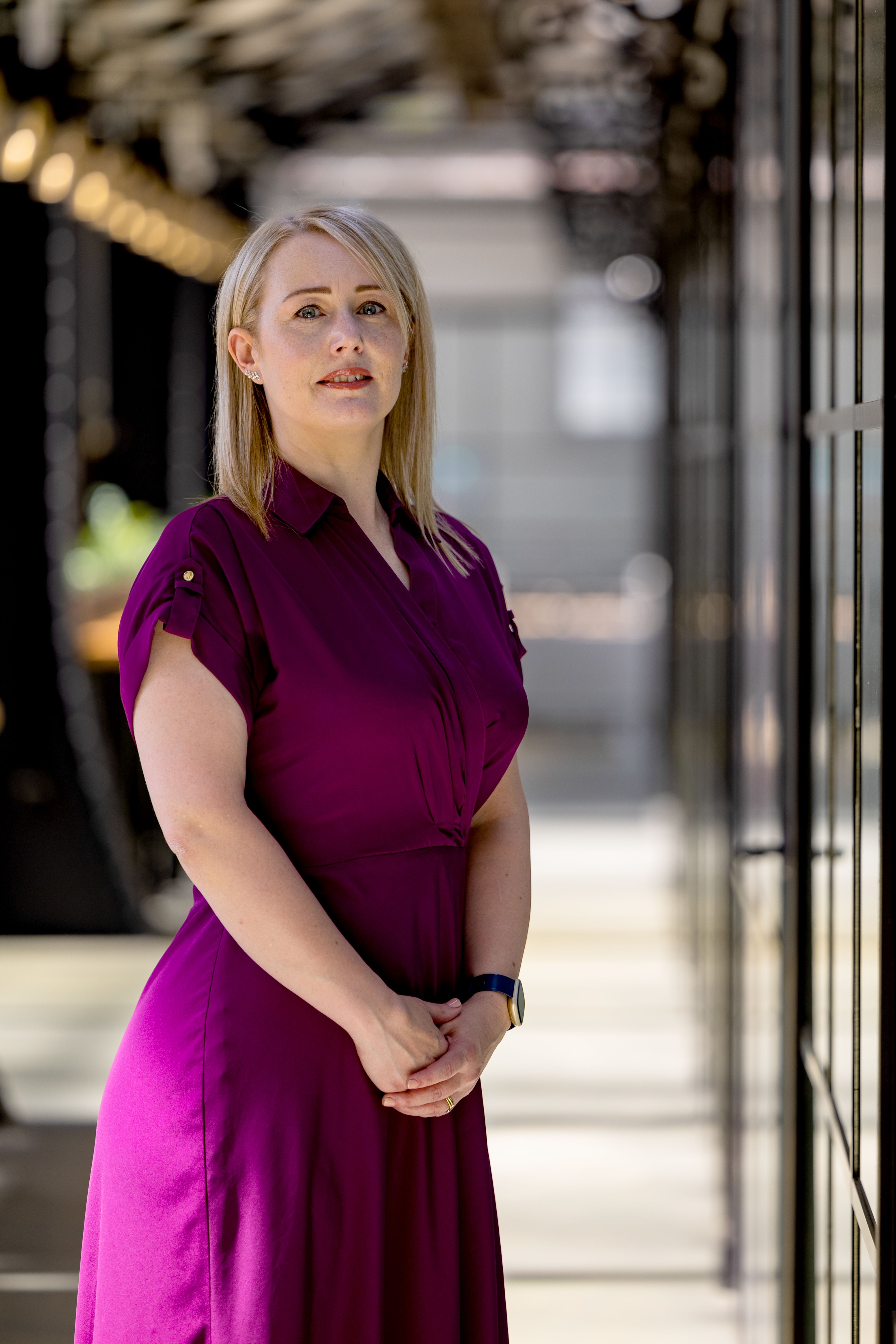Profile: Janice St. John-Matthews
Giving power to the people


Giving power to the people
Dr Janice St. John-Matthews is the architect of the latest AHP strategy for England, and only had to ask 3,200 people for help along the way.
The diagnostic radiographer, now head of AHPs at NHS England, used crowd-sourcing techniques to ensure that the five-year strategy was informed by as many voices as possible from all sections of society. “I always say I’m the penholder”, says Janice.
The challenge was using her skills to authentically and coherently weave 20,000 contributions together to develop a strategy for 200,000 AHPs, the AHP support workforce and AHP learners across England, to enhance the experience of people and communities.
The result is a document that is surprisingly concise at 31 pages, is of real practical use in everyday radiography, and does not pull punches with its two guiding principles of anti-racism and the co-production of services.
“The anti-racism message was really strong in everything we heard”, says Janice. “And you don't often see that within national strategy and policy. You don’t see anti-racism as one of the guiding principles. We believe that AHPs Deliver might be one of the first national health and care strategies to include this.”
Co-production is seen as an essential tool if the AHPs Deliver strategy is to build truly inclusive services, and it’s much more than consulting people - the aim is to give them an equal part in service conception, design, steering and management.
The crowd-sourcing of those contributions, capturing the voices of people and communities alongside those of professionals, is believed to be the first of its kind in health and care strategy development in the UK, and the novelty of the approach is summed up in the words of one contributor: “This is a visionary project. The way you are ensuring a wide range of people and community voices are captured is to be applauded. Thank you AHPs.”
How can the radiography community engage with the AHP strategy?
Janice grew up in a small village in County Tipperary, Ireland, and discovered radiography in a school physics lesson about X-rays. “My physics teacher said, did you know that you can do this profession called diagnostic radiography where you can use your problem-solving and communication skills and still develop your interest in physics?
“I later had some work experience in a one-room X-ray department in a very small hospital in rural Ireland, and thought wow, this is brilliant, I can apply science in a meaningful way and care for people.”
From the cottage hospital, she travelled to the University of Wales, College of Medicine, now Cardiff University, to train at the main trauma centre and teaching hospital in South Wales. Her plan was to finish training, work in London for two or three years, then return to Ireland.
Cardiff was a large department with a wide variety of modalities and a diverse demographic of patients. The team had developed a robust preceptorship programme that, on completion of a range of competencies, allowed you to progress from a basic grade to Senior 2 grade within 18 months.
“There was also a good social life, and as a 20-year-old, living away from family, that’s one thing I was looking for, a sense of belonging. And I thought, well, this is going to be the same in London, isn’t it? Just more expensive. So I decided to stay in Cardiff, then met my husband six weeks after I qualified, and the rest is history.”
Janice describes her career so far as “three chapters”. The first chapter was clinical work in Cardiff and later for a private imaging company, working on the mobile CT and MRI scanners up and down the south west of England and Wales, before becoming the company’s national education and development manager.
“We would have people come and join the organisation who needed training in MRI or CT scanning, whether that was at an introductory level or an advanced level.” This post gave Janice her first taste of curriculum development, not only for the employees but also for external staff from the NHS and other private providers, who attended the courses.
At the same time, in 2009, she was completing her master’s degree with a primary data collection dissertation on the benefits of radiography learners undertaking placements with private providers. “My master’s work isn’t published because at the time it was seen as a very radical idea and I remember nobody being very interested. Fast forward 15 years and private providers’ placement capacity is the mainstay for many pre-registration radiography programmes. Looking back, being an early adopter is a recurring theme.”
What can the radiography community do to help radiography learners?
The second chapter is set in higher education, when Janice worked as a senior lecturer at the University of the West of England, in Bristol, and started a doctorate in health professions education. Here she had an “incredible opportunity” to lead the development of the curriculum for a physician associate masters programme at the university, including a trip to the USA where physician associates were well-established as a profession.
“This was the first time I was leading on health and care curriculum design, and I was conscious about public-patient involvement and who were the people that we had supporting us. The contributions by those who were engaging were very valuable but the individuals all looked and sounded the same.”
“I remember having a bit of a penny-dropping moment thinking, well, that’s not everybody that we support when we’re out in healthcare. So who is at the table, who helps us design curriculum? Can we design better? Can we hear more voices, more diverse voices?”
Janice later saw the Chief AHPs Officer Suzanne Rastrick speaking about the first AHP strategy that was published in 2016, and how it was the largest crowd-sourced health policy in Northern Europe at the time. “It was in that moment I had my epiphany about patient-public involvement and curriculum design. And then I thought, has anyone ever tested to see if we could crowd-source a curriculum?”
Following a robust literature search, the answer was “no”, and this became the essence of her doctorate after overcoming the initial nervousness of her supervisors at Swansea University about digital crowd-sourcing. The result was 100 people mapped to the demographics of Bristol coming into a digital space to help design a pre-registration diagnostic radiography degree curriculum.
This work put Janice, by now deputy head of department for AHPs at UWE, in the perfect position to apply for a clinical fellowship appointed annually by the Chief AHPs Officer. “In the back of my mind, I thought, oh, there’s never been a radiographer in this post. Then I thought, well, you know what, how many people are going to apply for this who are doing a doctorate on crowd-sourcing?
“So my pitch at the interview was: I’m researching this. I’ve got some evidence-based ideas. I’d like to add value to the project that you’re doing. And I think that’s what got me the job - that and showcasing what appointing the first radiographer could bring to the fellowship.”
Career chapter three, working in national strategy and policy development, started in December 2020, and Covid restrictions meant that the crowd-sourcing for the next AHPs strategy would have to take place fully online. The lack of a face-to-face alternative for hard-to-reach groups raised the risk of digital exclusion diluting the pool of contributors.
This meant working with NHS England organisations and beyond to ensure proper representation across society, and particularly with an organisation called Working With Everyone to engage marginalised groups such as the travelling community, refugees, those who have experienced homelessness, and people living with addiction.
“The project team had to really think about what digital exclusion looks like and how we were going to work around it”, says Janice. “It’s not that people can’t use the digital tool but it might be that they need some teaching before they come into the session.
“And in the workshops, the cameras had to be kept off, partly because of safeguarding but partly because the cameras use data and if you can’t afford data that’s a problem. We also couldn’t use slides because that would be making the assumption that people can read. So you have to leave all your assumptions at the door.”
As one contributor said: “Thank you for including us from the start of this work. Often, we are an afterthought despite being considered under-represented communities.”
How can radiography skills be harnessed in national systems and spaces?
An enhanced foundation of the AHP strategy is “having the right AHPs, with the right skills, in the right place, at the right time”, and Janice is passionate about radiographers making the most of their skills to take on leadership positions across across health and care.
“There’s a commitment in the strategy that we do diversify leadership, including professional diversity. So what does it mean to be a radiographer in a leadership position outside of radiography? We have excellent examples of this already happening but personally I’d like to see more given the size of the profession within the health and care community.”
“I’ve undertaken one type of fellowship, but there’s a range of different fellowships at different levels, each with a different emphasis - for example, there might be multidisciplinary fellowships offered at a provider, systems or regional level. Recently Synergy reported on the Radiography Clinical Fellows hosted by the NHS England Workforce Training and Education directorate (formerly Health Education England). There are also opportunities such as the NHS Clinical Entrepreneurship programme.
“As a radiographer you can contribute much more than you might realise to the wider health and care agenda - so take those leaps of faith. Stepping outside of radiography doesn’t mean you are no longer a radiographer - it’s an opportunity to advocate for the profession in different spaces alongside broadening your horizons. Most importantly, your viewpoint, knowledge, and ‘unique selling points’ as a radiographer will further enhance the experiences of people and communities.”
Find out more...
Download the full strategy document here: The AHP Strategy for England: AHPs Deliver (2022-2027)
Understand how you can develop your own leadership skills: Developing allied health professional leaders – an interactive guide for clinicians and trust boards
Use the latest version of the CoR’s practical guide to career development for the whole radiography workforce: Education and Career Framework
Photography: Alastair Staley
Videography: Stephen Williams

